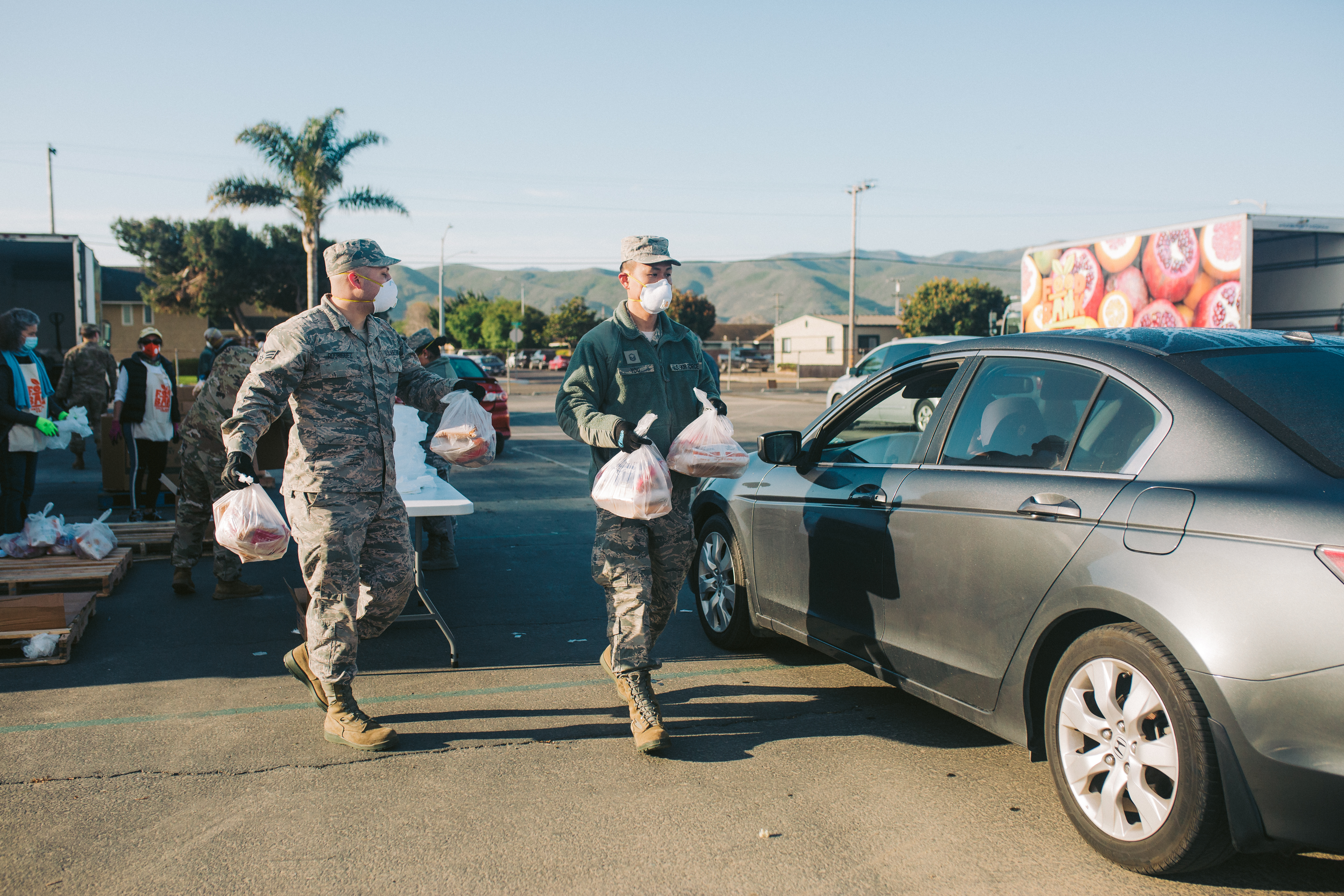Foodbank Implements Disaster Feeding Plan
Foodbank of Santa Barbara County Is Uniquely Prepared for COVID-19 Outbreak

How do you feed an entire county in a disaster situation, especially when it might not be safe to go outside?
By November 2019, the Foodbank of Santa Barbara County was already equipped to answer that question.
“Our mission is to ensure that everybody in the county of Santa Barbara has access to the healthy food they need,” said the organization’s marketing director, Judith Smith-Meyer. “We’re ready, and we have the relationships in place to help us do that.”
After learning that many in need were unable to access food resources during the Thomas Fire and Montecito debris flow disasters, the Foodbank led the development of a comprehensive Disaster Feeding Plan. Developed in collaboration with more than 30 organizations, the plan helps ensure that all county residents can be fed in the event of a large-scale disaster. Specifically, it was designed to provide individuals with food near or at their homes.
In accordance with the plan, all Foodbank distribution sites have been transitioned to “SAFE Food Net” locations that enforce social distancing and strict sanitation standards. Groceries are now distributed in bags to reduce contact and contamination. Over 15 new food distribution sites have been added to meet an increased demand for food, many of which are drive-throughs that minimize contact between volunteers and participants.
“For people who have never done it, no-contact drive-through is easy, very anonymous — we do collect your name but it’s not reported anywhere — and safe,” said Smith-Meyer. “You don’t even come close to the person who is handing you the bag of food.”
Participants are first asked to roll down their window and answer brief identification questions from a volunteer, who stands at a six-foot distance. The volunteer then places a bag of fresh produce and nonperishable groceries into the participant’s back seat or trunk. Demand is high for the drive-through locations, but Smith-Meyer shares that the lines move quickly and that plans for additional locations are in the works.
For seniors who are advised to quarantine, the Foodbank is delivering free groceries to any senior who is 60 years old and up, or anyone who is 55 and up with a self-certified disability. Deliveries are conducted by volunteers as well as members of the National Guard, and bags are left on doorsteps to minimize contact. Each bag contains directions for safe handling in both English and Spanish that guide the recipient on how to properly sanitize groceries before use.
The response to the senior home deliveries has been incredibly moving. “It’s not just about the food,” one elderly man told the Foodbank. “It’s the thought that really helps.”
Under the Disaster Feeding Plan, Foodbank services were also added to the 211 countywide public resources hotline. Through a simple phone call, residents of Santa Barbara County can sign up for free senior home delivery, find the closest food distribution center, and receive additional information about Foodbank services. The hotline, which operates in both English and Spanish, received 932 calls in its first week of operation.
Ensuring the safety of Foodbank volunteers and service recipients is a top priority, said Smith-Meyer. The Foodbank has leased two additional warehouses to accommodate the increased food supply and to ensure that volunteers can practice social distancing. Hand sanitizer, gloves, and masks are provided at no cost to volunteers, and frequent handwashing is enforced. All 50 food distribution sites receive regular inspections to ensure that CDC-recommended sanitation guidelines are followed.
The Foodbank has been able to triple its food distribution due to partnerships with statewide and national coalitions of food banks and relationships with local growers, wholesalers, and grocery retailers. But they’ve also experienced an outpouring of home garden donations from the community. “It really matters and makes a difference,” said Smith-Meyer.
What’s next? In the works is a text program that operates in both English and Spanish, which will connect community members with information about food resources. In April, the Foodbank hopes to pilot a prepared meals program to deliver professionally cooked dishes to local seniors. The program will help the food insecure while also supporting the economy and restaurant industry.
“We really want to emphasize that the Foodbank is totally ready to face this challenge and that there’s enough food for everyone who needs it right now,” said Smith-Meyer. “This is no time to be squeaking by on instant ramen when you need to be healthy [to have a strong] immune system.”
Want to donate, volunteer, or receive aid? Visit the Foodbank website for more information.


